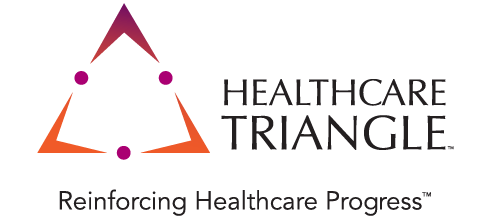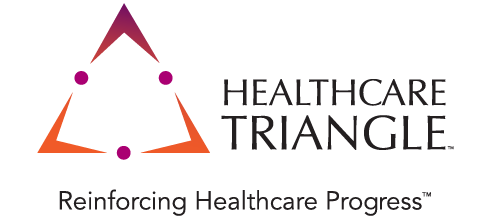Making Your EHR Work for You: 7 Roadblocks Faced by Healthcare Leaders
Healthcare Triangle
Sep 27, 2021
For over 20 years, the government and the healthcare industry have been trying to figure out how to make EHRs a meaningful tool that benefits providers and patients. But healthcare organizations typically face numerous obstacles to achieving that end. Recently, Healthcare Triangle partnered with CHIME to hold a focus group of healthcare CIOs to identify the most common roadblocks they face in optimizing their EHR strategy.
Ashleigh Rogers, Vice President of Healthcare for Healthcare Triangle, facilitated the focus group to gain a better understanding of ways to facilitate value.
The group of 10 CIOs represented a wide range of healthcare organizations. They all had been on their EHR for more than 10 years, and most were evaluating upgrades or changes. As a result, the issue of how to get more out of their EHR investment with fewer barriers is critical for each of them.
Here’s a brief overview of what they had to say:
1. While some of their expectations were met in their original EHR implementations, many were not.
“Our EHR has helped improve patient safety and quality of care,” said one CIO. “But the physicians complain it slows them down, and they spend extra hours on documentation.” Another attendee agreed that physician frustration runs high: “I’ve been doing implementations for a long time, and the physicians see EHRs as billing systems and not clinical improvement tools.” On the other hand, as one CIO pointed out, everyone agreed their EHR implementation has helped improve billing.Bolt-on tools or new features aren’t a magic fix for the challenges organizations face, participants agreed. Many CIOs noted that providers often feel frustrated with the EHRs even when they try to add voice recognition or other tools to streamline documentation. In part, the issue is that there is always something new, and there is never enough training.
2. Training—or lack of it—is one of the most common barriers to success.
“Epic EHR recommends 12 hours of training, but we only did eight,” said one CIO. Further, even when more training hours are added, there is always something new to learn. Often, by the time the providers get used to one system, the EHR is updated or changed. “We need to make the training for the EHR a required clinical competency,” one attendee said. “We should pay [clinicians] to complete the amount of training needed so they will take the time to do it.” Another said he thought EHR training should not only be part of team members’ clinical requirements, but that training should be led by the clinical team, not the IT department.Time and again, research has shown that not only does the right amount of training help providers get more from the EHR, but it significantly increases their overall satisfaction with the EHR as well. ”We set these lofty targets for the physicians on value and quality metrics, but we don’t give them the ability to really spend time in the EHR to truly adopt it. We don’t invest in deploying it properly.”
3. There are always new challenges and barriers.
The group kept coming back to the challenge of an ever-changing landscape. “I think one of our biggest roadblocks—and I’m sure this goes for everyone—is that the required documentation is a moving target,” one CIO said. “We have to change this workflow, and then we have to change that workflow. I used to think that post-meaningful use, things would stabilize and get to a point where we could optimize what we're doing, but then comes the 21st Century Cures Act. It's just a constant moving target.”Meanwhile, the vendors keep changing up the technology. “They want to keep making it better: ‘We'll fix this; we’ll add this capability.’ Keeping up with the upgrades takes effort and energy,” one attendee shared. “Part of EHR optimization is being able to communicate all the stuff that's coming out and changing. It's hard for everyone to keep up with.” Additionally, EHR security challenges have grown more complex, especially during the pandemic. “One roadblock that is becoming more and more prevalent is how to address security needs,” added another attendee. “We’re trying to keep up, but it’s becoming more difficult.” Others agreed, with one stating, “I’ve heard providers say that cybersecurity has put up barriers for them in optimizing the use of the EHR and being able to innovate.”
4. What providers really want is an electronic chart that tells the patient’s story.
Two of the attendees explained that what everyone wants is for the systems to be interoperable, gathering all the structured and unstructured data that is relevant to a patient and telling each patient’s data story so that providers can make informed decisions at any point of care. “The critical component here is truly trying to make sure that the data can be acted upon,” said one CIO. “That is going to be a critical differentiator for success moving forward.” Without access to meaningful actionable data and tools to use it, real digital transformation and improvements in healthcare will remain out of reach. “We have all this data, and it needs to tell a story,” a participant said. “In other industries, that is a huge deal, but there’s less expectation for that in healthcare.”5. At the same time, many providers are averse to change.
“I think there is a degree of culture change that needs to happen,” said one CIO. “We try advanced technology to help providers, but some physicians are averse to adopting these tools.” Or, on the flip side, physicians want to bring their own tools to work, and this can be difficult to manage. “When we have physicians coming in from outside the organization, they bring devices and software that introduce new layers of risk,” one attendee said. “We’re trying to solve that cybersecurity issue.” Or they want to heavily customize the EHR, which can simply be too time-consuming, one CIO says.6. Despite the many challenges of optimization, COVID has sped digital transformation.
According to one CIO, “COVID has accelerated digital transformation and, as we all know, healthcare is under significant pressure to improve. If we do the digital transformation journey correctly, I think it will improve healthcare's value proposition.” Several others agreed, with one saying, “For our group, [the pandemic] was a positive because it forced us to go in the direction where we should have been headed.” But several worry that if regulations that were relaxed during the pandemic return to their original state, their path to transformation may be waylaid.7. Transformation should be led by clinicians, not programmers or financial leaders.
When asked what would help propel them forward in their journey toward real digital transformation, several attendees agreed that clinicians should be in the driver’s seat. “We need a culture change. Clinicians are the lifeblood of the organization, and we need to embrace that perspective,” said one CIO. There was agreement that a huge burden is put on clinicians, but they aren’t engaged enough in the changes or the products, which makes it hard for them to produce the kind of transformative results people want.Healthcare Triangle (HCTI)’s seasoned EHR consultants bring a deep understanding of best practices, proven methods, and real-world experiences. We help you simplify EHR for your health system. Get started with HCTI EHR consulting services. For further discussion, drop an email to info@healthcaretriangle.com or schedule an EHR consultation.


